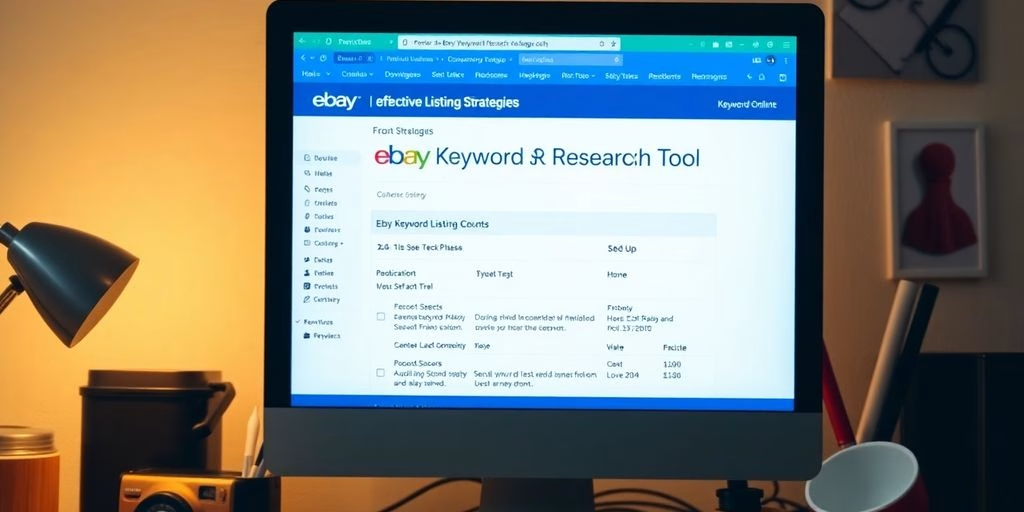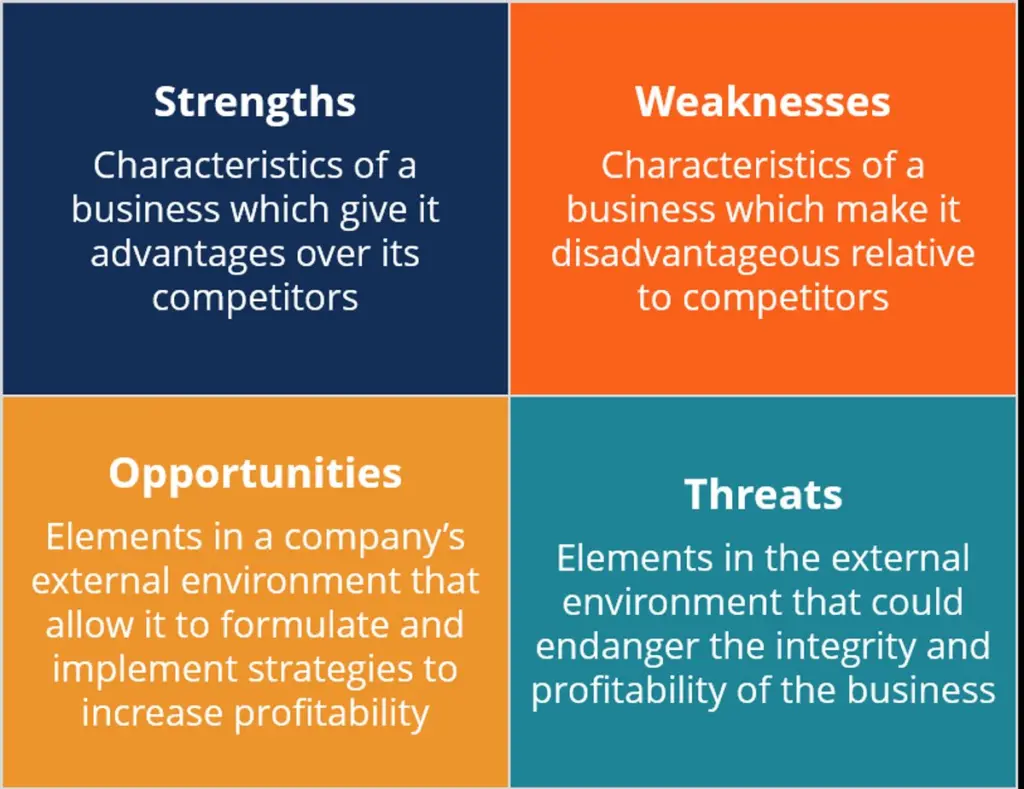Choosing the right domain name for your Shopify store is more than just a technical step; it’s a vital part of your brand’s identity. A well-chosen domain can help you stand out in a crowded market, enhance your credibility, and improve your visibility on search engines. In this article, we’ll explore how to select the perfect domain name that not only reflects your brand but also resonates with your target audience.
Table of Contents
ToggleKey Takeaways
- Keep your domain name short and memorable to avoid confusion.
- Choose a name that aligns with your brand identity.
- Consider SEO implications when selecting keywords for your domain.
- Test your domain for pronunciation and spelling to ensure it’s user-friendly.
- Secure your domain promptly to prevent losing it to competitors.
Understanding The Importance Of Domain Names For Your Shopify
The Role Of Domain Names In Branding
Okay, so, your domain name? It’s not just a web address. Think of it as your shop’s online personality. It’s the first thing people see, and it’s got to make a good impression. A strong domain name can really help build your brand identity. It’s like, if you’re selling quirky socks, you wouldn’t want a super corporate-sounding domain, would you? It’s all about matching the vibe.
Impact On Search Engine Optimisation
Right, SEO. It’s a big deal. And your domain name? It plays a part. While stuffing keywords into your domain isn’t the way to go anymore, a relevant domain can give you a little boost. Search engines like Google look at your domain to figure out what your site is about. So, if your domain is something like ‘bestcoffeeshoplondon.com’, it gives them a clue. It’s not the only thing that matters, but it helps. Think of it as one piece of the puzzle. You can also improve SEO by choosing the right domain.
User Trust And Credibility
Let’s be honest, a dodgy-looking domain can scare people off. If your domain is a string of random characters or a super long, complicated name, people might think your site is a bit suspect. A professional, easy-to-remember domain builds trust. It tells people you’re legit. Plus, having your own domain (instead of something like ‘yourstore.shopify.com’) makes you look way more professional. It’s all about building credibility with your customers. A custom domain is a cornerstone of your online presence.
A good domain name is an investment. It’s not just about having a web address; it’s about building a brand, improving your search engine ranking, and gaining the trust of your customers. It’s worth taking the time to get it right.
Here’s a quick list of things a good domain does:
- Builds brand recognition
- Improves search engine ranking
- Increases customer trust
- Makes your site easier to find
- Sets you apart from the competition
Key Considerations When Selecting Domain Names
Choosing a domain name can feel like naming a child – it’s a big decision! It’s not just about having an address for your online shop; it’s about creating an identity. You want something that sticks in people’s minds, is easy to share, and represents your brand well. Let’s get into some key things to think about.
Relevance To Your Brand
Your domain name should be a reflexion of your brand. I mean, it makes sense, right? If you sell handmade jewellery, your domain should hint at that. It helps customers immediately understand what your shop is about. Think of it as your digital handshake. It needs to be clear and relevant.
- Does it align with your products or services?
- Does it convey your brand’s personality?
- Is it easy to understand at a glance?
Simplicity And Memorability
Imagine trying to tell someone your website address over the phone, and it’s a string of complicated words and numbers. Not ideal, is it? Shorter, simpler names are easier to remember and type. Aim for something catchy and easy to spell. You want people to find you without any hassle. A good way to build your brand is to have a memorable domain name.
- Keep it short: Aim for under 15 characters if possible.
- Use easy-to-spell words: Avoid complex or unusual spellings.
- Make it memorable: Use alliteration or a catchy phrase.
Avoiding Common Pitfalls
There are a few traps you want to avoid when picking a domain name. Using numbers or hyphens can confuse people. Being too generic won’t help you stand out. And ignoring SEO completely can hurt your visibility. It’s about finding that sweet spot where your domain is unique, easy to remember, and helps people find you. It’s important to register a domain name that avoids these pitfalls.
Don’t get too caught up in trying to stuff keywords into your domain. It’s more important to have a name that’s easy to remember and represents your brand well. Think long-term, not just about short-term SEO gains. You can always optimise your site in other ways.
- Avoid numbers and hyphens: They can be confusing and easy to forget.
- Don’t be too generic: Stand out from the crowd with a unique name.
- Consider SEO, but don’t overdo it: Focus on relevance and brand identity. You can launch your online store with a well-thought-out domain name.
Exploring Extensions of Domain Name For Your Shopify

Choosing the right domain name extension is more than just picking .com; it’s about aligning your brand with the right online space. The extension you select can significantly impact how customers perceive your business and how easily they find you online. Let’s explore the options.
Popular Domain Extensions Explained
Okay, so you know about .com, but what about all the others? There’s a whole world of domain extensions out there, each with its own flavour and purpose. Here’s a quick rundown:
.com: The old faithful. Still the most recognised and trusted extension..net: Originally for network-related businesses, but now pretty general..org: Usually used by non-profits and charities..shop: Specifically for e-commerce businesses – could be a good fit for your Shopify store..store: Another e-commerce option, similar to.shop..co.uk(or other country-specific extensions): Great if you’re targeting a local market.
Choosing Between .com, .shop, And Others
So, which one should you pick? Well, .com is always a safe bet if it’s available. It’s what people automatically type in. But, if your .com is taken, don’t despair! A .shop or .store extension can be a great alternative, clearly signalling that you’re an online shop. Consider your target audience and what message you want to send. If you’re a UK-based business, a .co.uk might be better for local SEO. You can use Shopify’s domain name generator to explore available options.
The Significance Of Localised Extensions
Localised domain extensions (like .co.uk for the UK, .de for Germany, or .ca for Canada) can be a game-changer if you’re focusing on a specific country. They tell search engines and customers that you’re specifically targeting that region, which can boost your local SEO and build trust with local customers. Plus, sometimes the .com version is taken, but the local version is available! If you’re serious about targeting a particular market, a localised extension is worth considering. Remember to create a Shopify website that caters to your target audience.
Using a localised domain extension can significantly improve your search engine ranking within that specific region. It also helps in building trust and credibility with local customers, as it shows a commitment to serving their market specifically.
Utilising Shopify’s Domain Name Tools Effectively
Shopify provides a suite of tools designed to simplify the process of acquiring and managing domain names for your online store. These tools are integrated directly into the Shopify platform, offering a user-friendly experience for both beginners and experienced e-commerce entrepreneurs. Let’s explore how to make the most of these features.
Shopify’s Domain Name Generator
Shopify’s domain name generator is a handy tool if you’re struggling to come up with a suitable name for your store. You simply enter a few keywords related to your business, and the generator will provide a list of available domain names. It’s a great way to brainstorm and discover options you might not have considered. The tool also checks the availability of the suggested names, saving you time and effort. Remember to consider the suggestions carefully, ensuring they align with your brand and are memorable for your customers. It’s a good starting point, but don’t rely on it exclusively; your own creativity is still key.
Integrating Third-Party Domains
If you already own a domain name registered with a third-party provider like GoDaddy, you can easily connect it to your Shopify store. This allows you to maintain your existing domain while benefiting from Shopify’s e-commerce platform. The integration process is straightforward, involving updating your domain’s DNS settings to point to Shopify’s servers. Shopify provides clear instructions on how to do this, and many domain registrars also offer guides to assist you. This flexibility ensures you’re not locked into Shopify’s domain registration service and can choose the provider that best suits your needs. It’s worth noting that while Shopify simplifies the connection process, you’re still responsible for managing your domain renewal and settings with the third-party registrar. If you need to find the owner of a domain name, you can use tools like Shopify’s Free WHOIS lookup tool.
Managing Your Domain Settings
Shopify offers a centralised location to manage all aspects of your domain. Within your Shopify admin panel, you can access settings to configure various domain-related options. This includes setting your primary domain, managing subdomains, configuring email forwarding, and renewing your domain registration. Regularly reviewing these settings is crucial to ensure your domain is properly configured and your store remains accessible to customers. It’s also important to enable auto-renewal to avoid accidentally losing your domain due to an expired registration. Furthermore, consider enabling domain privacy protection to safeguard your personal information from being publicly accessible through WHOIS databases. Keeping your Shopify sitemap updated is also important for SEO.
Managing your domain settings effectively is not just about technical configuration; it’s about protecting your brand and ensuring a seamless experience for your customers. Take the time to understand each setting and how it impacts your online store.
Testing And Validating Your Chosen Domain Name
So, you’ve brainstormed a bunch of domain names, checked their availability, and maybe even registered a few. Great! But before you get too attached, it’s time to put those names through their paces. You need to make sure they actually work for your brand and won’t cause any headaches down the line. This stage is all about validation and ensuring your chosen domain is a solid foundation for your online store.
Conducting Pronunciation Tests
This might sound obvious, but say your domain name out loud. Several times. Then, get other people to say it. Is it easy to pronounce? Does it roll off the tongue, or do people stumble over it? A domain name that’s difficult to pronounce is a recipe for misspellings and lost traffic. Imagine telling someone your website is ‘Xylophone Emporium dot com’ over the phone – chances are, they’ll end up somewhere completely different. Keep it simple, keep it clear. A good rule of thumb is if you have to explain how to pronounce it, it’s probably not a good choice.
Checking Availability Across Platforms
Okay, so your domain name is available, but what about social media? You want to ensure you can secure consistent branding across all platforms. Imagine your domain is ‘Awesome Gadgets dot com’, but the username ‘@AwesomeGadgets’ is already taken on Instagram, Facebook, and Twitter. That’s going to cause confusion and dilute your brand identity. Use tools to check social media availability. It’s also worth checking for trademark issues. A quick search of the trademark database can save you a lot of trouble later on. Aim for consistency. If you can’t get the exact same name everywhere, try to get as close as possible.
Gathering Feedback From Potential Customers
Before you commit fully, get some outside opinions. Ask friends, family, or even better, potential customers, what they think of your domain name. Does it make sense? Does it sound trustworthy? Does it evoke the right emotions? You can use online surveys, polls, or even just informal conversations to gather feedback. Don’t be afraid to ask for honest opinions, even if they’re not what you want to hear. Consider these questions when gathering feedback:
- Is the name memorable?
- Does it accurately reflect the business?
- Is it easy to understand the brand from the name alone?
Remember, your domain name is often the first impression people have of your business. Make sure it’s a good one. Getting feedback at this stage can help you avoid making a costly mistake and ensure your domain name resonates with your target audience. You can even use Shopify’s domain name generator to get more ideas.
The Long-Term Implications Of Your Domain Name Choice

Choosing a domain name isn’t just a one-off task; it’s a decision that will stick with your business for the long haul. It’s worth thinking about how your choice today will affect you in the years to come. You want something that will grow with you, not hold you back. Let’s explore some of the things you should keep in mind.
Scalability And Future Growth
Think about where your business might be in five or ten years. Will your domain name still be relevant if you expand your product line or target a new audience? A too-specific domain name can limit your options later on. For example, if you start by selling only handmade jewellery, a domain like “handmadejewellery.com” might seem perfect. But what if you later decide to sell other accessories? A more general name, like “SparkleStyle.com”, would give you more room to grow. It’s about future-proofing your brand.
Brand Evolution Considerations
Brands evolve. What starts as a small, niche business might transform into something completely different over time. Your domain name should be able to adapt to these changes. Consider whether your chosen name allows for shifts in your brand’s identity or focus. Flexibility is key. You don’t want to be stuck with a domain that no longer reflects who you are as a company. Think about big brands like Apple; their name is broad enough to cover a wide range of products and services.
Legal Considerations And Trademark Issues
Before you commit to a domain name, do your homework. Check for existing trademarks to avoid potential legal battles down the road. It’s not enough to simply find a domain that’s available; you need to make sure it doesn’t infringe on someone else’s intellectual property. This includes variations of existing trademarks. A quick search on the Intellectual Property Office website can save you a lot of trouble. Also, consider registering your own trademark to protect your brand. This is especially important as you grow and become more established. You can register a domain name to protect your brand.
Choosing a domain name is a bit like planting a tree. You need to think about the roots, the branches, and how it will look as it grows. It’s an investment in your future, so take the time to get it right. A well-chosen domain can be a valuable asset for years to come.
Strategies For Securing Your Domain Name

So, you’ve found the perfect domain name for your Shopify store. Great! But the job’s not quite done. Now you need to make sure it’s actually secure and stays yours. Think of it like buying a house – you wouldn’t just move in without locking the doors, would you? Securing your domain is just as important.
Registering Your Domain Promptly
The moment you’ve decided on a domain name, register it. Seriously, don’t wait. Domain names are snapped up all the time, and you don’t want someone else grabbing yours. It’s a bit like finding the perfect parking spot – hesitate, and someone else will take it. Registering it quickly ensures it’s yours and nobody else’s. It’s a simple step, but it’s crucial for protecting your brand. You can parked domain to prevent others from using it.
Utilising Domain Privacy Protection
When you register a domain, your personal information (name, address, email, phone number) becomes publicly available in the WHOIS database. Domain privacy protection hides this information, replacing it with the registrar’s details. This helps prevent spam, unwanted solicitations, and even potential identity theft. It’s like having an unlisted phone number – you’re still reachable, but your personal details aren’t out there for anyone to find. It’s a small extra cost, but well worth it for the added security and peace of mind. It’s a good idea to check Shopify’s security measures too.
Renewal Strategies To Avoid Loss
Letting your domain registration lapse can be a disaster. Someone else could register it, and you’d lose your website, email addresses, and brand identity. Set up auto-renewal with your registrar to avoid this. Also, keep your contact and payment information up to date. It’s also worth setting up multiple reminders before the renewal date, just in case. Think of it like paying your bills – missing a payment can have serious consequences. Don’t let your domain name be one of them. Make sure you have a solid sales funnel in place to capture leads in case of any domain issues.
Losing your domain name can be a real headache. It can disrupt your business, damage your brand, and cost you a lot of time and money to recover. Taking these simple steps can help you avoid this scenario and keep your domain name safe and secure.
To keep your domain name safe, it’s important to follow some simple steps. First, always use a strong password and change it regularly. Next, consider adding extra security features like two-factor authentication. Finally, keep an eye on your domain’s expiry date and renew it on time. For more tips and to learn how we can help you protect your online presence, visit our website today!
Final Thoughts on Selecting Your Shopify Domain Name
Choosing the right domain name for your Shopify store is a significant step in establishing your online presence. It’s not just about having an address; it’s about creating a memorable identity that resonates with your audience. A well-thought-out domain can enhance your brand’s credibility and improve your visibility in search engines. As you embark on this journey, remember to keep it simple, relevant, and reflective of your brand. Take your time to brainstorm and consider all options before making a decision. Ultimately, a strong domain name can set the foundation for your store’s success in the competitive e-commerce landscape.
Frequently Asked Questions
Why is it important to choose a good domain name for your Shopify store?
A good domain name helps customers remember your store, builds trust, and improves your brand’s visibility online.
What should I consider when selecting a domain name?
You should think about how relevant it is to your brand, how easy it is to remember, and avoid using numbers or hyphens.
Can I use a domain name that is similar to a popular brand?
It’s best to avoid names that are too similar to well-known brands to prevent legal issues and confusion.
What are the best domain extensions for a Shopify store?
The most popular extension is .com, but you can also consider .shop or .store, depending on your business type.
How can I check if my desired domain name is available?
You can use Shopify’s domain name generator or check directly on domain registration sites to see if your preferred name is free.
What happens if I forget to renew my domain name?
If you forget to renew it, you could lose your domain name, which may lead to losing customers and credibility.









































































































